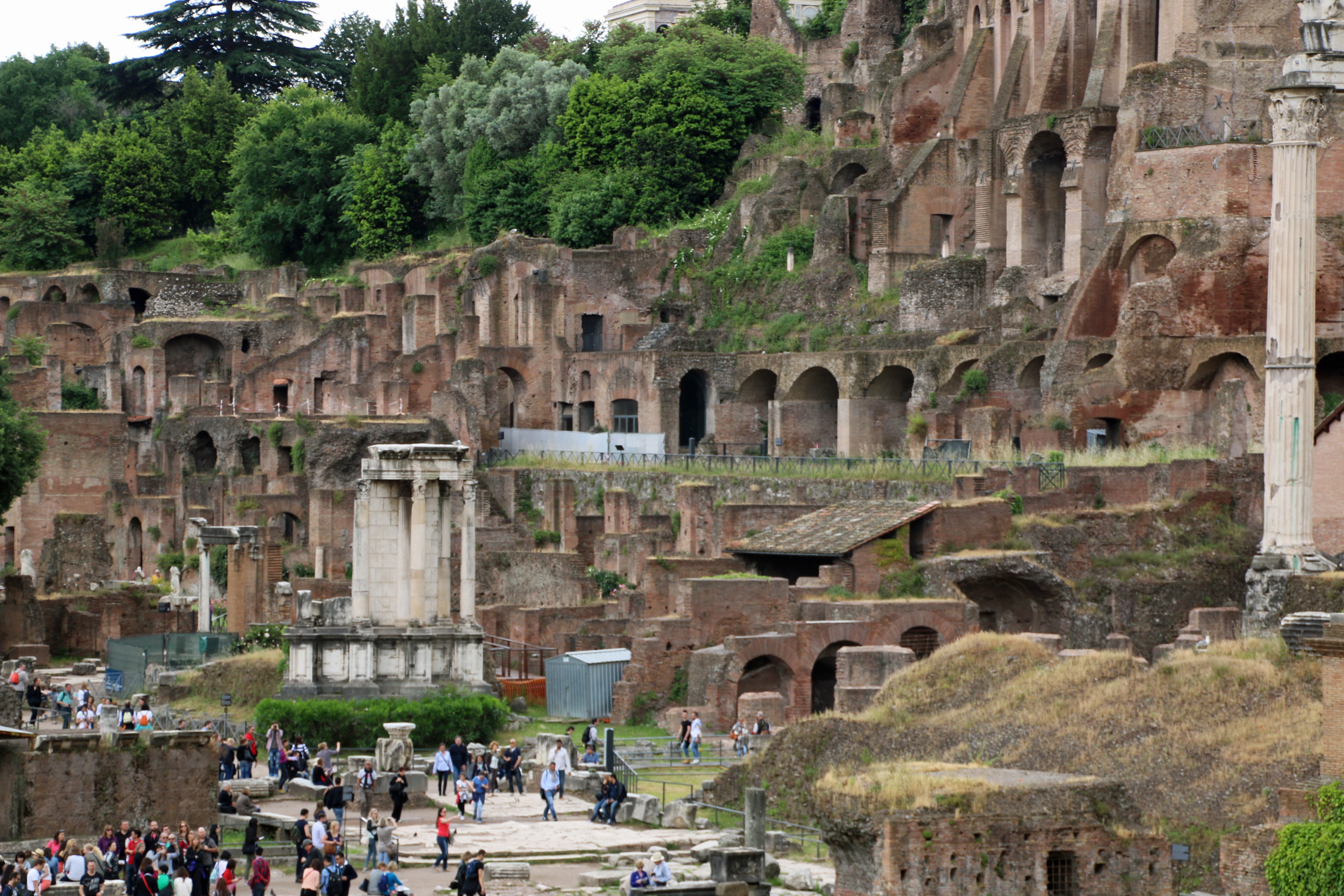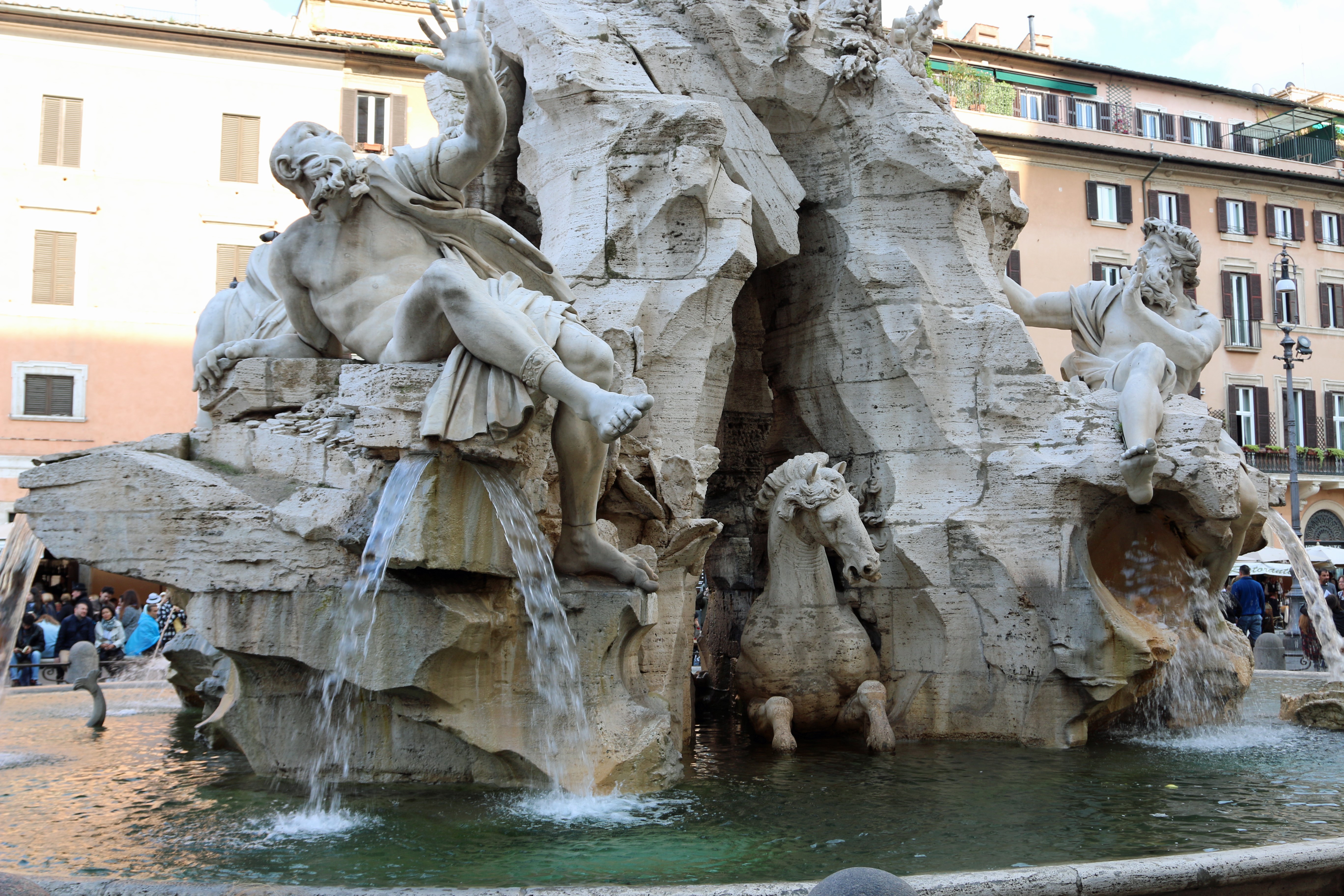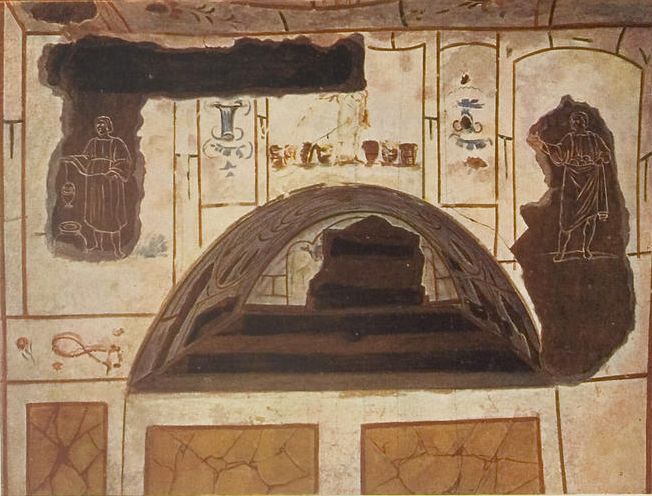 |
| Dome of St. Peter's Basilica. Photo by Diane Frisch. |
If you are lucky enough to have any time at all in Rome, there are a few things you really need to see. Ideally, I would recommend at least 4 or 5 days to get a nice feel for the city. Once, we visited Rome for just a day trip excursion from a cruise, and it was very unsatisfactory. Too much traffic, too many crowds, and not enough time! If you truly have just the one day, it will be worth it to hire a private tour guide with skip the line access to take you around the Eternal City. You will be eternally grateful (haha!).
When in Rome, there are certain sights that you really should not miss. These are my top picks.
1) The Colosseum - This may be the first image that comes to mind for most folks when we think of Rome. It is spectacular! Located in the center of the city, this is the largest amphitheater EVER built and dates back to around the year 80AD. We really enjoyed having a guide take us through and explain the place to us and the bloody spectacles that went on there. It was not pretty.
 |
| Interior of the Colosseum. Photo by Diane Frisch |
2) The Forum/Palatine Hill - Located not far from the Colosseum, the Forum was once the center of all things in Rome, and later as Rome's influence spread, it was the center of the civilized world. In this area you will find, Palatine hill and the Forum. It is chock full of ruins that span about 1000 years. There are "layers" of ruins built upon top of ruins. It is fascinating and a little bit hard to follow without a guide to explain it all to you.
 |
| Roman Forum. Photo by Diane Frisch |
3) St. Peter's Basilica - Technically this is in a whole other country, the Vatican, located in the center of Rome. - This is the largest church on the planet, and it is FULL of very important art. Highlights are the Pieta by Michelangelo, the dome, also designed by Michelangelo, Bernini's huge canopy over the altar, The 13th century statue of St. Peter which pilgrims line up to rub or kiss the foot of, Bernini's Apse, the Crypt where St. Peter is buried, and so much more. TIP: Remember that modest dress is required for admittance to the Basilica as well as most other churches in Italy. Shoulders and knees must be covered. In the heat of summer, I brought a large scarf to cover up.
 |
| Interior of Saint Peter's Basilica. Photo by Diane Frisch |
4) The Sistene Chapel - This is also located in Vatican City, adjacent to the Vatican museum and is known for the spectacular frescoes painted by Michelangelo. It was recently restored and now looks as good as new (almost!) There are also frescoes by Perugino, Botticelli, Ghiriandaio, Signorelli, Rosselli, Fra Diamante, and more.
 |
| Sistene Chapel. Photo from museivaticani.va |
5) The Vatican Museum - Technically includes the Sistene Chapel, but houses 4 miles of collections and also requires modest dress. Highlights include the fantastic collection of Greek and Roman statues, and the frescoes in the Raphael Rooms.
 |
| Hallway in the Vatican Museum. Photo by Diane Frisch. |
6) Piazza Navona - This is a beautiful and very large Piazza. In the center is the Four Rivers Fountain, designed by Bernini in 1651. All around you will find beautiful buildings, and churches with art by Caravaggio and Rubens. In this area you will find a center of pubs, cafes, nightlife, and a personal favorite, delicious gelato
 |
| Bernini's Four Rivers Fountain in Paizza Navona. Photo by Diane Frisch. |
 |
| Lunch break with the kids at Piazza Navona. |
7) The Fountain of Trevi - Recently restored, this is another iconic symbol of Rome. Tradition holds that if you throw a coin in the fountain, you will guarantee a return to Rome. This is a bustling tourist spot, but definitely worth a visit while in Rome.
 |
| Trevi Fountain. Photo from trevifountain.net |
8) The Spanish Steps- This is a great place to people watch, enjoy some street music, and shop in the Piazza di Spagna district at the base of the steps.
 |
| Spanish Steps. Photo by Diane Frisch. |
9) The Pantheon - The most notable thing about this ancient church, in my opinion, is the wide opening in the center of the dome. It lets in an abundance of natural light, and also rain, depending upon the weather. The dome is the widest masonry dome in all of Europe, at 142 ft high, and 142 ft wide. This building was built in AD 118 by architect Hadrian, as a pagan temple. It was donated by Emperor Phocas to Pope Boniface IV in 608. It still serves as a Catholic church.
 |
| The Pantheon. Photo by Diane Frisch. |
10) The Catacombs- Here you will find the burial tunnels of Rome's early Christians beneath the roads leading out of town. A guided tour will show you a subterranean chapel, tombs and even some frescoes and engraved slabs from the burial sites of the early Christians. I found this extremely interesting to visit with our knowledgeable guide, but I will warn you that some folks find the tunnels a bit claustrophobic
 |
| Photo from Wikimedia.org |
11) EAT! Gelato! Pasta! Pizza! Vino! I know this isn't a place to visit, but Wow, everything is so delicious. Eating your way through town is a BIG part of any visit to Rome! Ask locals for recommendations or just look around and see where the locals are going. This city is a feast for all of your senses, INCLUDING taste. In the photo below, I am at a lovely little restaurant just off of the Piazza Navona, da francesco. I recommend it!
IMPORTANT TIP: The Colosseum, Forum, and all the Vatican sights get very crowded. Buy your tickets in advance or take a "skip the line" or VIP access tour to save wasting hours in line. If it is possible, consider visiting in the "shoulder seasons" of spring and autumn to avoid the big crowds.
Please visit my Blog to follow me on more travels near and far!
travelswithdianeblog
















